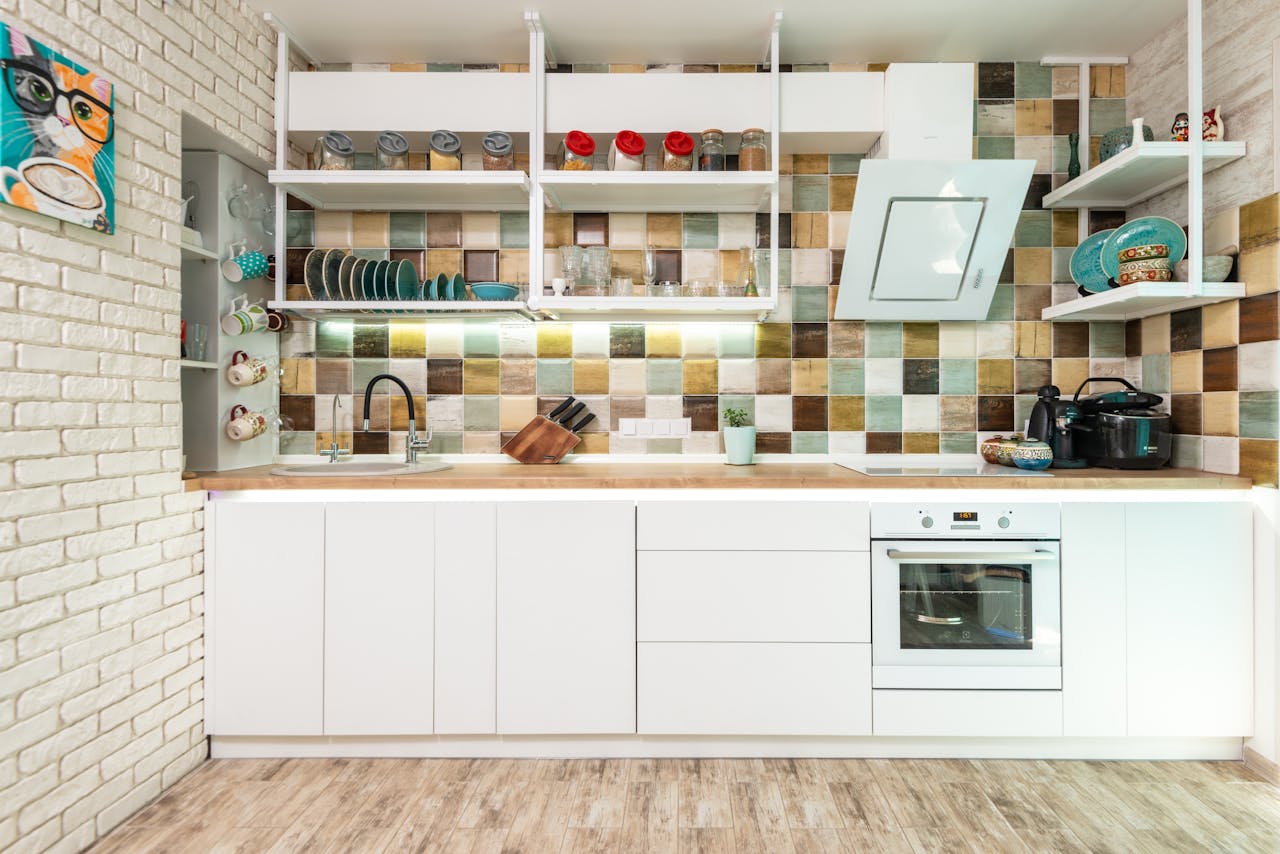In a world increasingly aware of its environmental impact, sustainable living has become a priority for many households. One area of the home that often garners attention in this respect is the kitchen. With its array of appliances, water and energy consumption, and potential for waste, the kitchen can be a significant contributor to a home’s overall environmental footprint. But fear not, by making smart decisions about design, materials, and appliances, you can create a kitchen that’s not only stylish and functional, but also eco-friendly. In this comprehensive guide, we’ll explore how you can design and build a sustainable, energy-efficient kitchen that will reduce waste, save water, and help to protect the environment.
Choosing Sustainable Materials for Your Kitchen
When planning your eco-friendly kitchen, the first step is to consider the materials you’re going to use. The materials you choose can have a significant impact on the sustainability of your kitchen. It’s not just about the materials themselves, but also about how they’re produced, transported, and eventually disposed of.
Have you seen this : What are the latest trends in UK kitchen design for 2023?
Opt for eco-friendly materials like bamboo, cork, or reclaimed wood for your cabinets and countertops. These materials are renewable, meaning they can be regrown at a pace that meets demand, and they have a lower environmental impact compared to traditional materials like hardwood or granite. For flooring, consider linoleum, a durable and natural material that’s biodegradable at the end of its life.
Also, think about your kitchen appliances. Models that are Energy Star-certified will be more energy-efficient, helping you to reduce your carbon footprint and potentially save on energy bills. Stainless steel is also a good choice, as it’s recyclable and long-lasting.
Also read : What are the latest trends in UK kitchen design for 2023?
Energy Efficient Appliances and Lighting
Your choice of appliances and lighting can also make a significant difference to the eco-friendliness of your kitchen. When purchasing new appliances, look for those with high energy-efficiency ratings. These appliances use less electricity, thereby reducing your carbon footprint and energy bills.
Consider replacing traditional incandescent light bulbs with energy-saving LED or compact fluorescent lamp (CFL) bulbs. These offer the same level of brightness but consume significantly less energy and have a longer lifespan. As well as using energy-efficient bulbs, you can also make the most of natural light by strategically positioning windows and skylights during the design stage.
Water-Saving Features in Your Kitchen
Water is a precious resource, and it’s crucial to make every effort to reduce water waste in your kitchen. There are several ways you can achieve this. For starters, consider installing a low-flow faucet. These faucets use significantly less water than standard models, without compromising on pressure.
In addition to this, choose dishwashers and washing machines that have a high efficiency rating. These appliances use less water and energy, greatly reducing your environmental impact. You could also install a greywater system, which recycles water from your kitchen sink and dishwasher for use in your garden or toilet.
Reducing Food Waste
The kitchen is often the source of a substantial amount of household food waste. However, there are many ways to minimise this. You can start by planning your meals and shopping trips carefully to avoid buying more food than you need.
Consider investing in a compost bin for your kitchen scraps. This not only reduces the amount of waste going into your bin but also provides you with nutrient-rich compost for your garden. If composting isn’t an option, many councils in the UK now offer food waste recycling services.
Eco-Friendly Cleaning Products
Finally, consider the products you use to clean your kitchen. Many traditional cleaning products contain harsh chemicals that can be harmful to the environment. By choosing eco-friendly cleaning products, you can maintain a clean and hygienic kitchen without causing unnecessary harm to the environment.
These products are usually made from natural ingredients and come in minimal, recyclable packaging. You can also consider making your own cleaning products using ingredients such as white vinegar and baking soda, which are effective cleaners and completely safe for the environment.
Creating an eco-friendly kitchen is more than just a fad or trend; it’s part of a broader movement towards sustainability and respect for our environment. By making mindful choices about the materials, appliances, and practices in your kitchen, you can contribute to this movement in a significant way. Remember, every little bit helps, and even small changes can make a big difference.
Optimising Waste Management in Eco-Friendly Kitchen
Waste management is another crucial component of a successful eco-friendly kitchen design. The way you manage your waste can significantly reduce your kitchen’s environmental impact. Essentially, your waste management strategy should aim to minimise waste and maximise recycling and composting.
To efficiently manage your waste, consider implementing a recycling system. It could be as simple as having separate bins for glass, paper, plastic, and organic waste. This system not only makes recycling easier but also encourages you to think more about what you’re throwing away.
Composting is also an excellent way to manage food waste. An in-kitchen compost bin can turn your kitchen scraps and waste into nutrient-rich soil for your garden, contributing to a circular economy. If you don’t have a garden, many local councils offer composting facilities where you can bring your compostable waste.
Packaging is another significant source of waste in the kitchen. When shopping, opt for products with minimal or biodegradable packaging. Buying in bulk can also help reduce packaging waste and often proves more cost-effective.
Finally, a key aspect of waste management in an eco-friendly kitchen is reducing food waste. Plan your meals carefully to avoid buying and cooking more than necessary. Use leftover food creatively to prepare new meals or freeze them for future use.
Conclusion: The Impact of an Eco-Friendly Kitchen
Opting for an eco-friendly kitchen is an investment not just in your home but also in the future of our planet. It’s about making conscious choices that reduce your environmental impact and carbon footprint, promoting sustainability in your daily life.
Eco-friendly kitchen design focuses on using sustainable materials, maximising energy efficiency, optimising waste management, and utilising eco-friendly cleaning products. It’s about more than just saving money or following a trend, it’s about making a difference and contributing to a healthier and more sustainable world.
Remember that creating an eco-friendly kitchen doesn’t have to be an overwhelming task. It’s easier than ever to find sustainable materials and energy-efficient appliances. Also, many small changes can make a big difference. Something as simple as using a compost bin or switching to eco-friendly cleaning products can have a significant impact.
With an eco-friendly kitchen, you’re not only creating a healthier and more enjoyable space for you and your family, but you’re also playing a crucial part in safeguarding our environment. It’s a change that benefits everyone, and it starts in your home. So, why not take the first step towards a more sustainable lifestyle with an eco-friendly kitchen?






